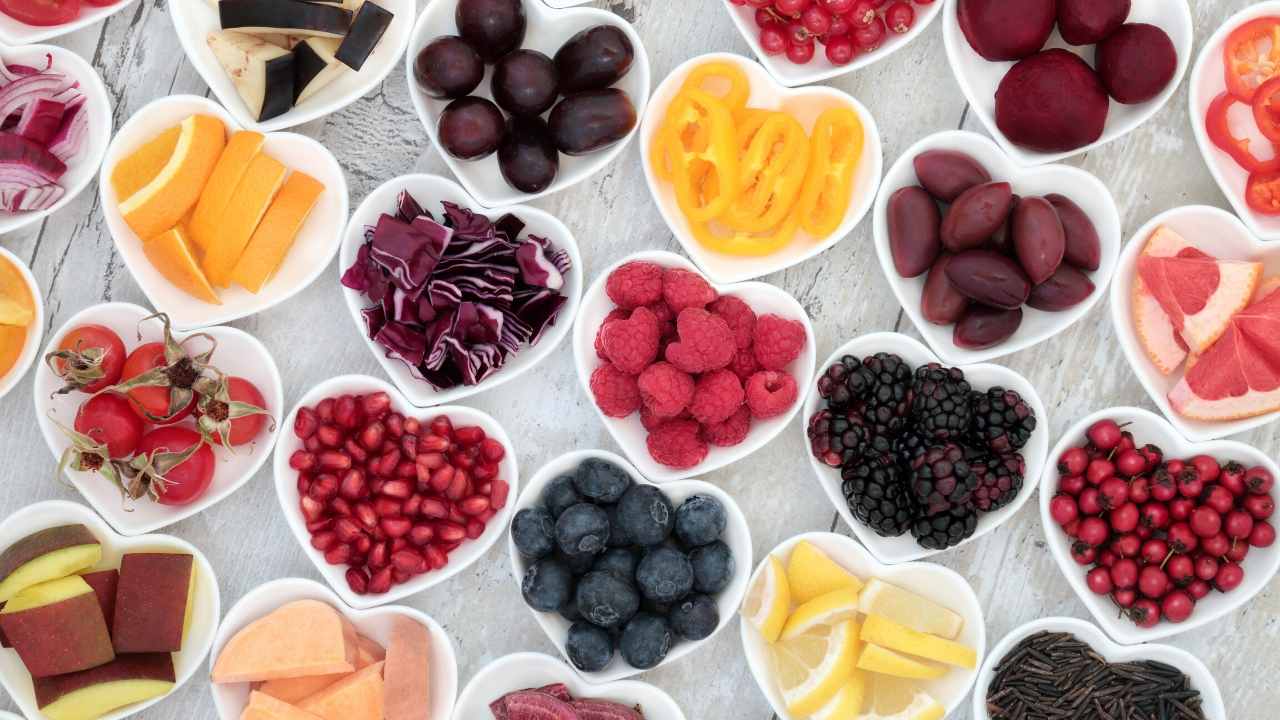
You can enjoy a satisfying snack or dessert made from fruits and vegetables, without having to sacrifice your nutritional intake. Natural sugars can also be found in fruits, which are high in vitamins and minerals. They also have fiber, antioxidants, essential vitamins, and other important nutrients. It is best to consume the whole fruit, rather than fruit juice, which has been stripped of its nutrients. Look for canned fruits that have been preserved in syrup or water. Fresh fruit can be purchased at your local market.
Protein is another important part of a balanced diet. About a quarter of your plate should be protein. This food is crucial for muscle mass, growth and wound healing. There are two options for protein: fish and animal meat. If you are trying to cut down on meat, opt for organic, unprocessed varieties. Plant-based protein sources can be substituted for red meat. You can eat more protein in your diet to make it healthier and more satisfying.

You can start eating healthier by considering the nutritional values of each food. A balanced diet is one that contains all the required nutrients in the appropriate amounts and quantities. A balanced diet includes fat, vitamins, minerals, as well as the proper amounts of protein and carbohydrate. Include foods high in fiber and complex carbs, such as beans, brown rice, nuts, or beans, to achieve the ideal nutritional balance. Balanced diets are also high in healthy fats and lots of fiber.
A balanced diet is the ideal combination of nutrients and foods. It should contain a variety fruits and vegetables along with protein, grains and dairy. A small amount of chicken and fish should be added to the mix. These foods are rich in antioxidants and phytonutrients. These foods are essential to your overall health. These foods should be eaten in the right amounts to maintain a steady metabolism.
Eating a variety of fruits and vegetables will help you get a balanced diet. You should avoid eating processed meats and eat more fruits and veggies. Apart from fruits and vegetables, it is important to eat a variety of whole grains and dairy products as well as lean and lean proteins. If you are concerned about dietary boredom, make sure you include a wide variety of foods in your daily meal. The more variety of ingredients, the greater.

A balanced diet should be rich in protein, carbohydrates, and healthy fats. A well-balanced diet should include a variety vegetables and fruits to satisfy your appetite. Refined grains and sugary foods should be limited. The right amount of each food should be included in a balanced diet. For example, whole grains such brown rice are important for a healthy diet. Consuming too many one type of food will result in you needing more of another type.
FAQ
Are there 5 ways to have a healthy lifestyle?
Healthy lifestyles include eating right, exercise regularly, getting enough rest, managing stress, having fun, and eating healthy. You should avoid processed foods, sugar, or unhealthy fats. Exercise helps burn calories and strengthens muscles. Sleeping well improves concentration and memory. Stress management reduces anxiety, depression and other symptoms. Fun keeps us happy and healthy.
How do I count calories?
Perhaps you are wondering what the best diet is for you. or "is counting calories necessary?" It depends on many factors such as your current health, personal goals, preferences, and overall lifestyle.
The Best Diet For Me - Which One Is Right For You?
My current health status, personal goals, preferences, and overall lifestyle all play a role in choosing the right diet. There are many different diets, some good and some not so good. Some diets work better than others. So what should I do? How do I make a good decision?
These are the questions this article will answer. It begins with an overview of the different diets today. The pros and cons of each diet are then discussed. Finally, we'll look into how to choose the best one for you.
Let's first take a look at different diets.
Diet Types
There are three main types: low-fat, high-protein, or ketogenic. Let's briefly discuss them below.
Low Fat Diets
A low-fat diet reduces the amount of fats you eat. This is accomplished by decreasing the intake of saturated fats such as butter and cream cheese. You can replace them with unsaturated oils (olive oil and avocados) For those looking to lose weight quickly, a low-fat diet is often recommended. This diet can cause problems such constipation as heartburn, indigestion, and even stomach pain. In addition, it may lead to vitamin deficiencies if a person doesn't get enough vitamins from their food.
High Protein Diets
High protein diets reduce carbohydrates to favor of proteins. These diets often have higher levels of protein than most other diets. These diets are designed to build muscle mass and help you burn more calories. They may not be able to provide sufficient nutrition for people who need it. They can also be very restrictive so they may not be suitable for everyone.
Ketogenic Diets
Ketogenic diets can also be known as keto diets. They are high on fat but low in carbs and proteins. These are often used by bodybuilders and athletes because they allow them the ability to train harder and for longer periods of time without feeling tired. To avoid side effects such as fatigue, nausea, headaches, or other unpleasant side effects, you must strictly adhere to their instructions.
Is it possible to have a weak immune system due to being cold?
Cold weather can cause a decline in your immune system. Your body produces fewer white blood cell which fight infection. Cold can also make you feel better as your body releases endorphins to your brain, which reduce pain.
What is the difference of a virus from a bacteria?
A virus is a microscopic organism that cannot reproduce outside its host cell. A bacterium, a single-celled organism, reproduces by splitting into two. Viruses are small, around 20 nanometers in size. Bacteria are much larger, at 1 micron.
Viruses spread easily through contact with infected bodily tissues, such as saliva and urine, semen, vaginal secretions or pus. Bacteria are often spread via direct contact with contaminated surfaces or objects.
Viruses can enter our bodies through cuts, scrapes, bites, or other breaks in the skin. They can also enter the body through the mouth, nose, eyes and ears, vaginal, rectum or anus.
Bacteria may enter our bodies through cuts and scrapes on our skin, burns, insect bites, and other wounds. They can also be introduced to our bodies by food, water and soil.
Both bacteria and viruses can cause illness. But viruses can't multiply within their hosts. Viral infections can only cause diseases in living cells.
Bacteria can spread within the host and cause illness. They can also invade other parts of your body. They can even invade other parts of the body, which is why antibiotics are necessary to eradicate them.
Statistics
- WHO recommends reducing saturated fats to less than 10% of total energy intake; reducing trans-fats to less than 1% of total energy intake; and replacing both saturated fats and trans-fats to unsaturated fats. (who.int)
- According to the Physical Activity Guidelines for Americans, we should strive for at least 150 minutes of moderate intensity activity each week (54Trusted Source Smoking, harmful use of drugs, and alcohol abuse can all seriously negatively affect your health. (healthline.com)
- The Dietary Guidelines for Americans recommend keeping added sugar intake below 10% of your daily calorie intake, while the World Health Organization recommends slashing added sugars to 5% or less of your daily calories for optimal health (59Trusted (healthline.com)
- According to the 2020 Dietary Guidelines for Americans, a balanced diet high in fruits and vegetables, lean protein, low-fat dairy and whole grains is needed for optimal energy. (mayoclinichealthsystem.org)
External Links
How To
27 Steps to a healthy life when your family eats only junk food
It is easy to eat healthy when you cook at home. However, many people are not skilled in preparing healthy meals. This article will help you make healthier choices while dining out.
-
Find restaurants that offer healthy options.
-
Order salads and vegetables before ordering any meat dishes.
-
Ask for sauces without added sugar.
-
Avoid fried items
-
Request grilled meats instead of fried ones.
-
Don't order dessert unless your really need it.
-
Be sure to have something other than dinner.
-
Take your time and chew slowly.
-
Eat water.
-
Breakfast and lunch should not be skipped.
-
Fruits and vegetables are a great addition to every meal.
-
Choose milk over soda
-
Try to stay away from sugary drinks.
-
Reduce the salt content of your diet.
-
Limit the amount of time you eat at fast food restaurants.
-
If you can't resist temptation, ask someone to join you.
-
Don't let your children watch too much TV.
-
During meals, turn off the TV.
-
Drink no energy drinks
-
Take regular breaks from the office.
-
Get up earlier in the morning to exercise.
-
Exercise everyday.
-
Start small and increase your knowledge slowly.
-
Realistic goals are important.
-
Be patient.
-
Find time to exercise even if you don't feel like it.
-
Use positive thinking.